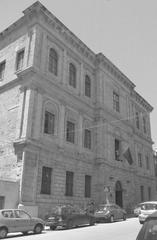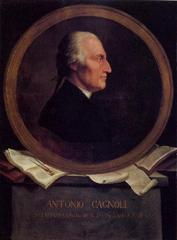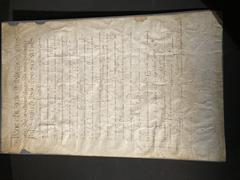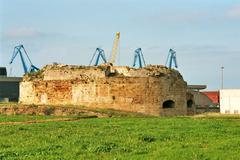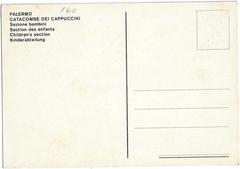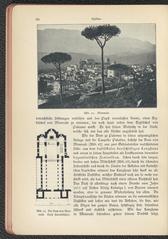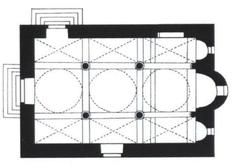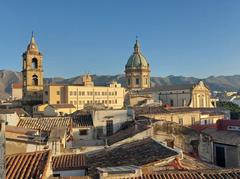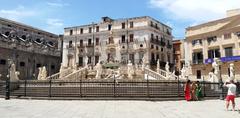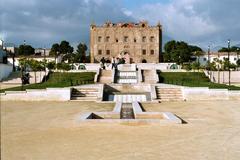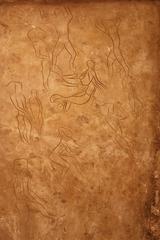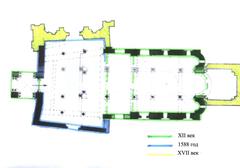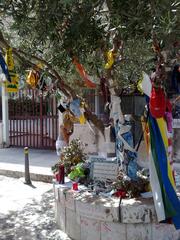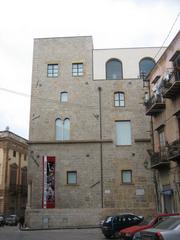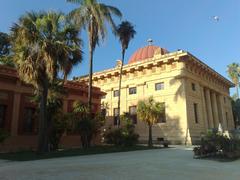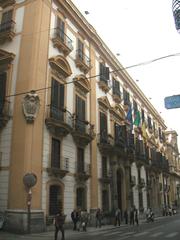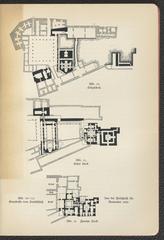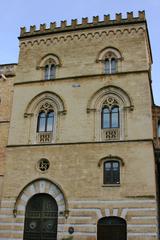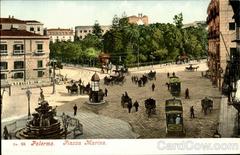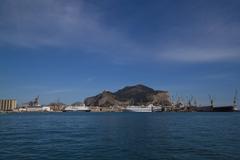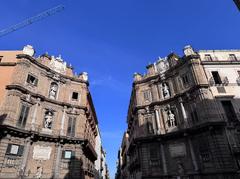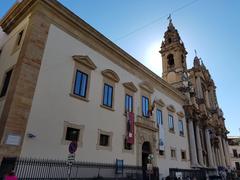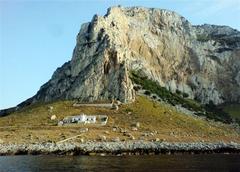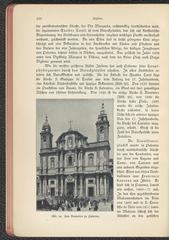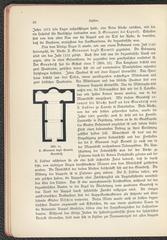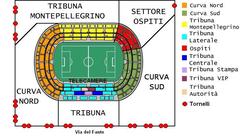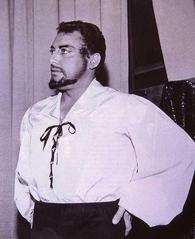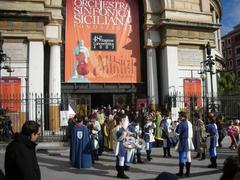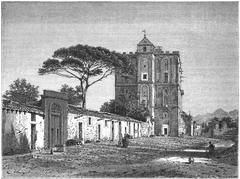Museo Dell’Islam Visiting Hours, Tickets, and Palermo Historical Sites Guide
Date: 14/06/2025
Introduction to Museo Dell’Islam and Its Significance in Palermo
Situated within the historic Castello della Zisa, the Museo Dell’Islam (Museo d’Arte Islamica) is a cultural cornerstone that encapsulates the vibrant Islamic heritage which shaped Sicily from the 9th to 12th centuries. The museum’s extensive collection reflects the profound legacy of Arab rule and the subsequent Arab-Norman synthesis, offering a unique perspective on the multicultural evolution of Palermo.
As part of a UNESCO World Heritage Site, the museum is housed in a building that is itself a masterpiece of Arab-Norman architecture. The Castello della Zisa, with its innovative cooling systems and geometric motifs, exemplifies the architectural dialogue between Islamic, Byzantine, and Norman influences. The museum preserves artifacts discovered through archaeological work and restoration projects, actively fostering intercultural dialogue and broadening our understanding of Palermo’s diverse historical fabric (Museionline, Arab America, Italy Chronicles).
This guide provides detailed information on visiting hours, tickets, accessibility, and tour options, and also serves as a comprehensive starting point for exploring Palermo’s broader Arab-Norman heritage—including landmarks such as the Palatine Chapel, Palermo Cathedral, and the bustling Ballarò Market.
Contents
- Introduction
- Historical Context: Arab-Islamic Rule in Palermo
- The Norman Conquest and Cultural Synthesis
- Museo Dell’Islam: Mission, Collections, and Highlights
- Visiting Hours, Tickets, and Visitor Information
- Accessibility and Visitor Experience
- Nearby Arab-Norman Attractions
- Tips for Your Visit
- Frequently Asked Questions (FAQ)
- The Revival of Islamic Heritage in Palermo
- Suggested Itinerary
- Conclusion and Next Steps
- Sources
Arab-Islamic Rule in Palermo: Foundations of a Cultural Legacy
Palermo’s transformation began in 831 CE with the arrival of Arab forces, ushering in an era of urban and cultural development that positioned the city among the Mediterranean’s leading centers. By the 10th and 11th centuries, Palermo was home to around 250,000 inhabitants, rivaling even Constantinople in size and splendor (Arab America). The city flourished with hundreds of mosques, lush gardens, and advanced irrigation systems such as the qanat, reflecting the sophistication of Islamic engineering and urban design (Wonders of Sicily).
During this period, Palermo became an intellectual hub, facilitating the transmission of scientific, philosophical, and artistic knowledge throughout Europe. The city’s cosmopolitan atmosphere fostered vibrant exchanges among local and visiting scholars, artisans, and merchants (Arab America).
The Norman Conquest and the Siculo-Norman Synthesis
The Norman conquest in 1072 did not erase Palermo’s Islamic legacy; instead, Norman rulers actively integrated Islamic architects and artisans into their projects. This resulted in a distinctive cultural blend known as the Siculo-Norman style, evident in monuments such as the Cappella Palatina and Castello della Zisa (Museum With No Frontiers). Features such as muqarnas ceilings and Arabic inscriptions in these buildings highlight the collaboration between cultures (Wonders of Sicily).
The enduring influence of Islamic culture is also seen in the Sicilian language, which retains Arabic loanwords, especially in areas related to agriculture, food, and architecture. Palermo’s pluralistic past fostered an environment of coexistence among Muslims, Christians, and Jews—a tradition reflected in the city’s material and intangible heritage.
Museo Dell’Islam: Mission, Collections, and Highlights
Mission and Vision
Museo Dell’Islam was established to preserve, document, and interpret the Islamic artistic legacy in Sicily. Its mission is to promote intercultural dialogue and highlight the historical coexistence of diverse communities in Palermo (Comune di Palermo).
Collection Overview
Spanning the 9th to 12th centuries, the museum’s collection includes:
- Metalwork: Elaborate examples of brass, gold, and silver craftsmanship, adorned with calligraphic and geometric designs (Museionline).
- Wooden Mashrabiyya Screens: Intricately carved latticework that filtered light and air in Islamic architecture (Magazine Snav).
- Multilingual Inscription (1149): A stone slab inscribed in Hebrew, Latin, Byzantine Greek, and Arabic—testament to Palermo’s multi-religious society (Wikipedia).
- Ceramics and Everyday Objects: Items originating from Sicily and the wider Mediterranean, illustrating historical trade networks (Museionline).
Artifacts were acquired through archaeological excavations and restoration projects in Palermo and western Sicily (Comune di Palermo).
Visiting Hours, Tickets, and Visitor Information
Location and Transportation
Museo Dell’Islam is located inside Castello della Zisa, approximately 2 km west of Palermo’s historic center. The museum is easily accessible via public transportation, taxi, or on foot, with convenient connections to other major historical sites (Savoring Italy).
Opening Hours
- Monday to Saturday: 9:00 AM – 7:00 PM
- Sundays and Public Holidays: 9:00 AM – 1:30 PM
- Closed on Mondays (some sources note closure on Mondays and certain public holidays)
- Last entry: 30 minutes before closing
Visiting hours may vary seasonally; please check the official website ahead of your visit.
Tickets and Admission
- Standard adult ticket: €6–€8
- Reduced rates: For students, seniors, groups
- Free entry: On the first Sunday of each month, and for children under 18, EU teachers, and art history students
Tickets are available online or on-site, and advance booking is recommended during peak tourist periods (Museionline).
Accessibility
- The museum is wheelchair accessible, with ramps and elevators.
- Restroom facilities are adapted for visitors with disabilities.
- Exhibit labels and audio guides are available in multiple languages.
Visitor Experience and Facilities
- Visit Duration: Approximately 1.5 hours, including time to explore both the collections and Castello della Zisa’s architecture.
- Guided Tours: Available in Italian and English, and by prior arrangement in additional languages. Audio guides are also offered.
- Photography: Permitted for personal use without flash or tripods; some artifacts may have specific restrictions.
- Facilities: Modern restrooms, cloakroom, and a gift shop with books and souvenirs.
Nearby Arab-Norman Attractions
Enhance your visit by exploring neighboring sites rich in Islamic and Norman heritage:
- Palatine Chapel: Famed for its muqarnas ceiling and mosaics.
- Norman Palace: Former royal residence and seat of power.
- Palermo Cathedral: Built over an earlier mosque, featuring Islamic architectural elements.
- La Zisa and La Cuba: Norman palaces with strong Islamic influences.
- Ballarò Market: A lively marketplace reflecting the city’s ongoing multiculturalism.
Combined heritage passes may be available for multiple sites.
Tips for Visiting Palermo’s Arab-Islamic Sites
- Arrive early to avoid peak crowds and enjoy quieter exploration.
- Wear comfortable shoes for walking on uneven historic surfaces.
- Book tickets online during busy seasons.
- Consider a guided tour for richer historical context.
- Explore nearby markets and restaurants for a taste of Palermo’s living Arab-Islamic tradition.
Frequently Asked Questions (FAQ)
Q: What are Museo Dell’Islam’s visiting hours?
A: Usually Monday to Saturday, 9:00 AM – 7:00 PM; Sundays and public holidays, 9:00 AM – 1:30 PM. Closed Mondays. Always check the official website for updates.
Q: How much do tickets cost?
A: Standard tickets are €6–€8, with discounts and free entry for specific categories. Tickets are available online and onsite.
Q: Is the museum accessible for wheelchair users?
A: Yes, ramps and elevators are provided.
Q: Are guided tours available?
A: Yes, in Italian and English, and by request in other languages. Audio guides are also available.
Q: Can I take photos inside the museum?
A: Photography is generally permitted for personal use. Flash and tripods are not allowed.
Q: What other Arab-Norman sites should I visit nearby?
A: Palatine Chapel, Norman Palace, Palermo Cathedral, La Zisa, La Cuba, and Ballarò Market.
The Revival of Islamic Heritage in Palermo
In recent decades, Palermo has experienced a renewed appreciation for its Arab-Islamic history. Local initiatives, new restaurants, and cultural centers celebrate this heritage, contributing to a citywide sense of pride and fostering dialogue among communities (Arab America). The recognition of Palermo’s Islamic past not only enriches its cultural landscape but also promotes intercultural understanding in today’s globalized world.
Suggested Itinerary for Exploring Palermo’s Historical Sites
Morning:
- Begin at Museo Dell’Islam (allow 60–90 minutes).
- Walk to Ballarò Market for a taste of Palermo’s multicultural street life.
Midday:
- Visit the Palatine Chapel and Royal Palace to experience the Siculo-Norman blend.
- Explore La Zisa Palace for further insights into Arab-Norman architecture.
Afternoon:
- Tour Palermo Cathedral and climb to the rooftop for panoramic city views.
- Visit San Giovanni degli Eremiti or other nearby Arab-Norman religious sites.
Conclusion and Next Steps
Museo Dell’Islam stands as a testament to Sicily’s rich legacy of cultural exchange and coexistence. A visit to the museum is not only an exploration of the past but also a celebration of Palermo’s ongoing multicultural vitality.
Plan your visit:
- Confirm current visiting hours and ticket prices on the official website.
- Book tickets in advance during high season.
- Enhance your experience with a guided tour and by combining your visit with other Arab-Norman monuments.
For more travel tips, event updates, and curated itineraries, download the Audiala app and follow us on social media.
Sources and Official Links
- Arab America – Palermo’s Arab Heritage
- Wonders of Sicily – Arabs in Sicily
- Museum With No Frontiers – Islamic Art in Palermo
- Comune di Palermo – Museo d’Arte Islamica
- Museionline – Museo d’Arte Islamica
- Italy Chronicles – The Arab Legacy in Palermo
- The World of Sicily – Zisa Palace
- Cultured Voyages – One Day in Palermo
- Italy Review – Arab-Norman Palermo
